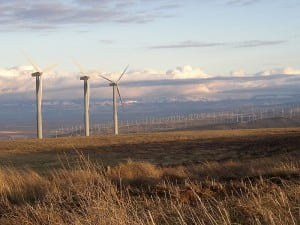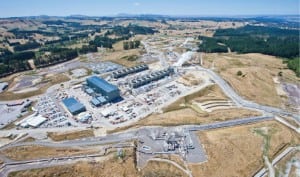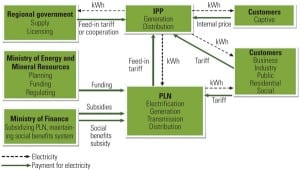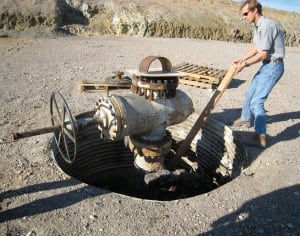Geothermal
-
Renewables
NREL: Cost Gap for Wind and Solar Could Diminish without Subsidies in West by 2025
A new report from the National Renewable Energy Laboratory (NREL) suggests wind and solar generation could become cost-effective without federal subsidies if they are sited in the most productive locations. “It is too early to say how strong the post-2025 market for renewables will be or whether it will be primarily market-driven or policy-driven. In […]
Tagged in: -
Coal
Okla. to Seek Rehearing of Regional Haze Contest with EPA
Oklahoma will seek a rehearing of its regional haze case against the Environmental Protection Agency (EPA) before the full 10th Circuit Court of Appeals, state Attorney General Scott Pruitt confirmed on Wednesday. On July 19, a divided three-judge panel threw out the state’s claims that the EPA had “impermissibly rejected” a State Implementation Plan (SIP) […]
-
Geothermal
Contact Energy Ltd.’s Te Mihi Power Station Harnesses Sustainable Geothermal Energy
Te Mihi Power Station is a two-unit 166-MW geothermal plant currently undergoing commissioning on New Zealand’s North Island. It replaces the Wairakei Power Station constructed in 1958—but with a much smaller environmental footprint. The double flash technology selected produces ~25% more power from the same amount of geothermal fluid that is currently used at Wairakei. For its continuing commitment to renewable geothermal energy, Contact Energy Ltd.’s Te Mihi Power Station is the winner of POWER’s 2013 Marmaduke Award for excellence in power plant problem-solving. The award is named for Marmaduke Surfaceblow, the fictional marine engineer and plant troubleshooter par excellence.
-
Coal
Indonesia: Energy Rich and Electricity Poor
Even though it enjoys sizeable coal and natural gas reserves, Indonesia struggles to provide electricity to its growing economy. Geography is its most obvious challenge. Others include evolving international markets and an energy sector that remains highly politicized.
-
Gas
IEA: Renewable Generation Could Surpass Global Natural Gas Share, Double Nuclear by 2016
Driven by the booming growth of generation from hydro, wind, and solar photovoltaics (PV), generation from renewables on a terawatt-hour basis is set to surpass that from natural gas and double nuclear’s share by 2016, becoming the world’s second-most important global electricity source after coal, according to a new report from the International Energy Agency (IEA).
-
Geothermal
U.S. EGS Project Adds 1.7 MW Grid-Connected Output
One of the first enhanced geothermal systems (EGS) was connected to the U.S. electric grid this April, marking a major milestone for the fledgling technology that seeks to tap the enormous terrestrial heat potential deep within Earth’s crust using directional drilling and pressurized water.
-
Coal
Hearing Panelists Assess Grid Reliability Challenges Posed by Nat. Gas, Renewables
Panelists at a House hearing today refuted varied claims concerning if and how increased natural gas and renewables generation pose widespread challenges to the reliability of the electric grid. Some pointed to ineffective rules in the restructured wholesale power market and the failure of conventional power plants as being more of a threat to grid reliability.
-
Hydro
Report: Global Renewable Investments in 2012 Tumble 11% as Market Shifts from West to East
Public and private investment in solar, wind, and other renewables worldwide declined 11% in 2012 from an adjusted 2011 record of $302 billion, a new survey from Pew Charitable Trusts shows. Yet the global renewable sector still registered a record 88 GW of new nameplate capacity last year, and China reclaimed the lead in global renewables investments from the U.S., it says.
-
Coal
Lawmakers Push for Financing Parity for Renewable Projects
Bipartisan legislation introduced on Wednesday by a bicameral group of lawmakers seeks to give renewable energy project investors access to an existing corporate structure whose tax benefits are now only available to investors in fossil fuel–based energy projects.
-
Renewables
The Spotlight on a Mexican Success Story
Energy demand in Mexico, according to the Secretary of Energy (SENER), will increase by approximately 4% each year for the next ten years, and with it the potential for private sector growth in the industry. Download the report.
Tagged in:





